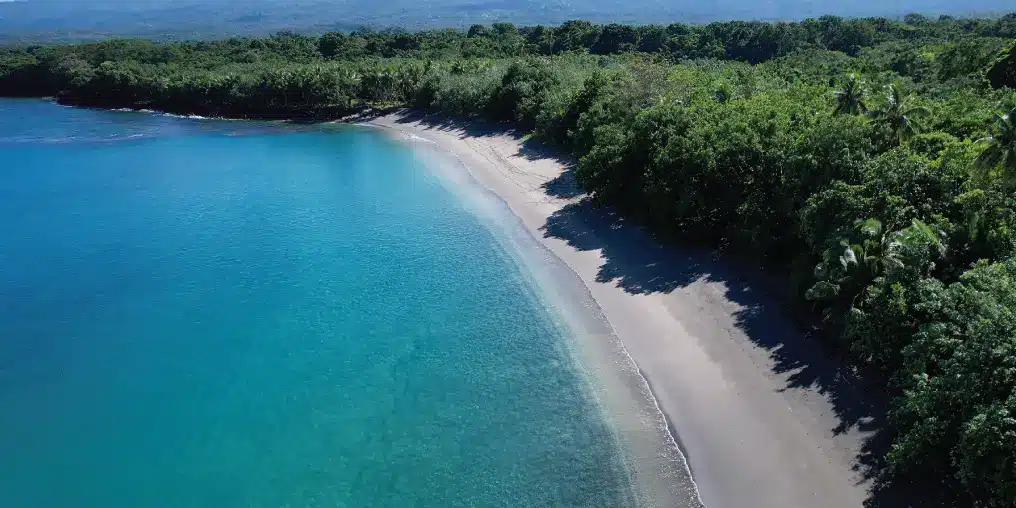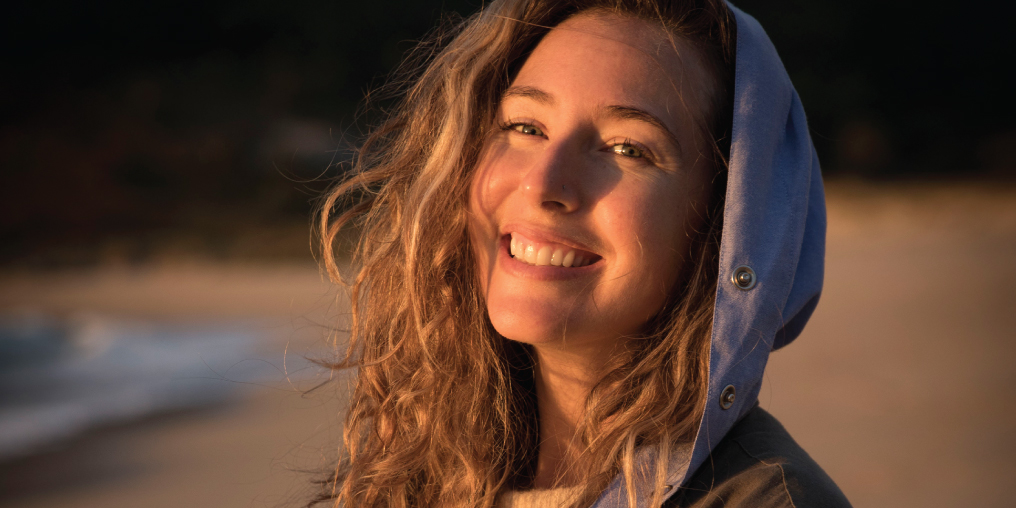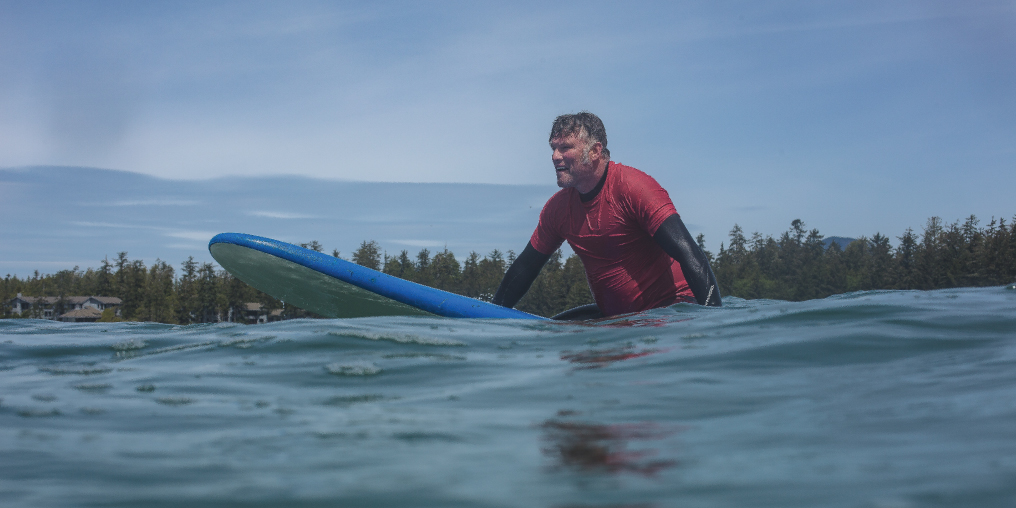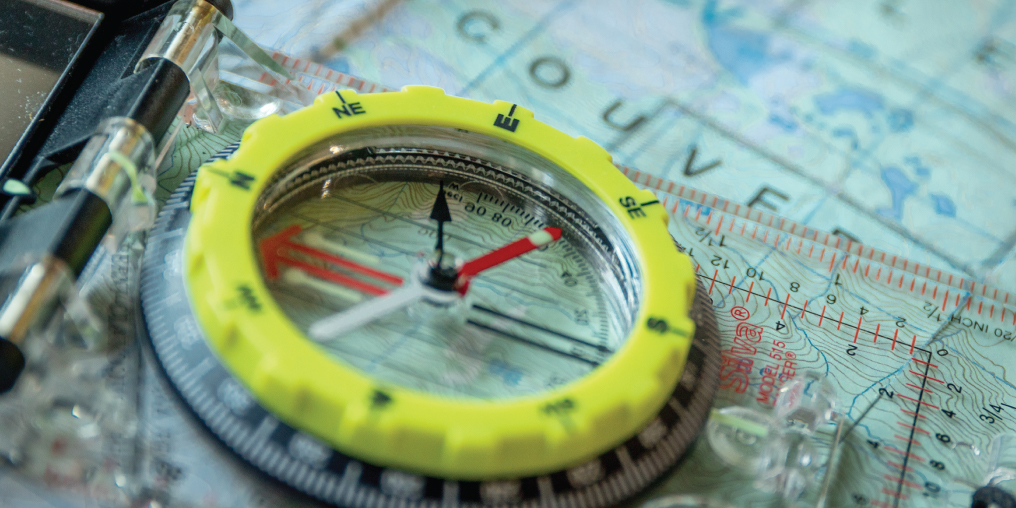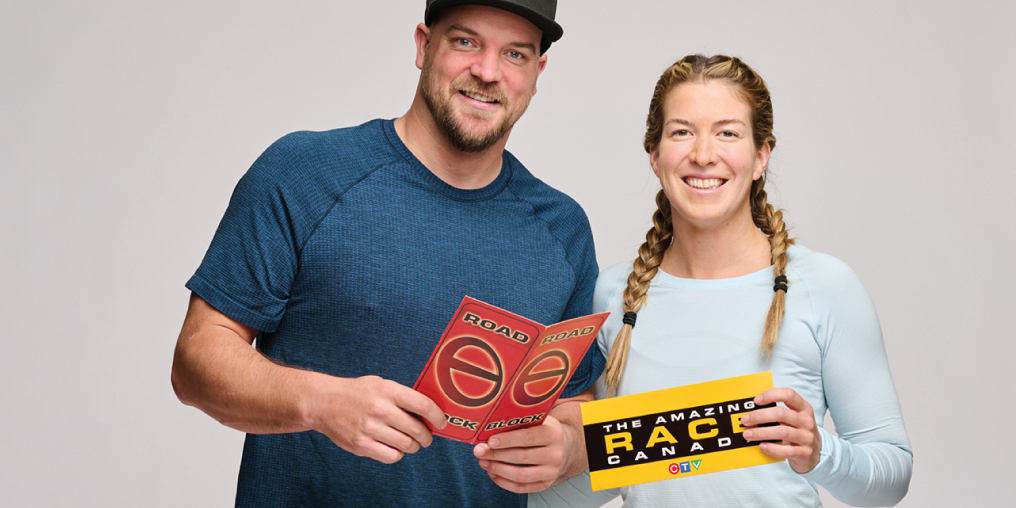SAMOAN SOUL
Sitting on the start line of the World Long Distance Championships for outrigger canoeing in Apia, Samoa, I found myself gasping for oxygen and wondering if I’d made a terrible mistake. Having lived 13 years in Hawai’i, I was no stranger to racing canoes in temperatures in the 30s, but Samoa’s 100 per cent humidity was a complete game changer. Our Canadian six-woman 40s crew hadn’t had time to get used to the feeling of racing in a furnace with a wet blanket over our heads. Would I even be able to paddle 25 kilometres in these conditions, let alone at a race pace? Glancing at the shoreline where spectators drenched in sweat hid uncomfortably in the shade of the event tents while fanning themselves and guzzling water, I was truly skeptical about whether I would make it to the finish line.
My late husband, Rick Nu’u, was a professional outrigger canoe coach. We met in 1999 when I was training to complete a first-ever iron crossing (no crew changes) of the 66-km Moloka’i channel in Hawai’i by a women’s outrigger canoe crew. He was so excited for what we were trying to accomplish, and swooped in to rescue us when the race committee changed their mind about letting us attempt this feat. Rick and I were eventually married, built a little house and farm on Maui’s North Shore, and had two feisty little girls. When our second daughter became too old to fly for free, we moved to Canada to be closer to my family and settled down on a small farm in Courtenay.
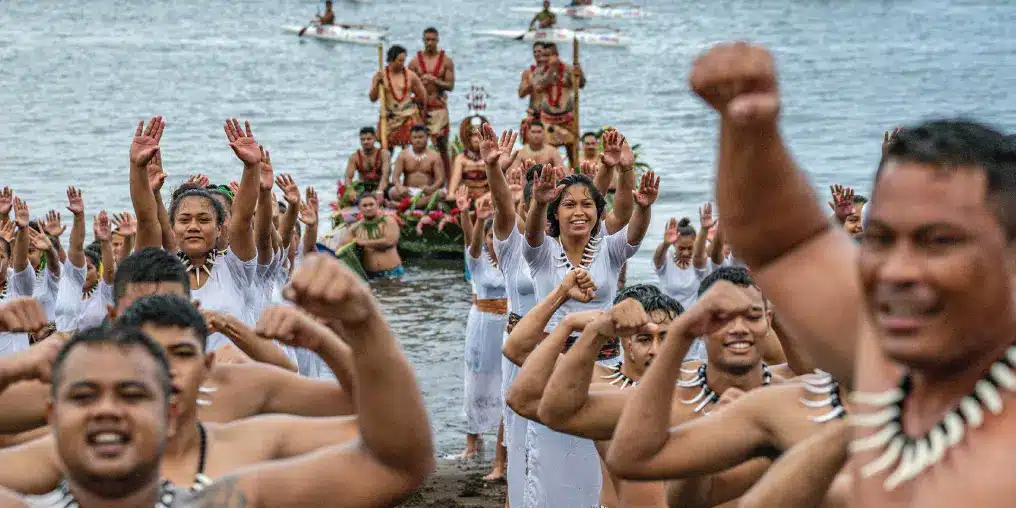
PHOTO BY XAVIER KEUTCH
World Long Distance Championships in Samoa a chance to reconnect with family and heritage
Rick was Samoan, born and raised in New Zealand. He passed away suddenly and tragically in 2013 when our daughters, Tentie and Tia, were five and seven years old. After his death I hung up my paddle. There was just no way I had time, what with raising the girls on my own, looking after the farm, and holding down a full-time job. But in 2022, when I heard that the World Long Distance Championships were going to be in Samoa in 2023, I felt compelled to attempt to make it on the national team. It would be the perfect excuse to push through my recent travel aversion and take my daughters to the place where their father’s family came from. My hope was that being in Samoa and reconnecting with family there would give the girls a bond with their heritage and an understanding of what it means to be part Samoan; bring them closer to their deeply missed father; and instill in them a sense of pride and belonging to help ground them during their transition to adulthood in this turbulent world.
Embracing Samoan culture
When my daughters discovered that the people of Samoa are very religious and we would need to dress modestly, they were surprised: would we really need to keep our shoulders and legs covered in such an extremely hot and humid place? But when we arrived and saw the remarkable number and size of the churches on the island, the importance of religion to the Samoan people became clear. We learned that modesty would indeed be necessary, but mainly when we were in the villages and around elders. We purchased some colourful lavalavas (sarongs), which became the go-to garment of choice for the rest of the trip. Polynesian men also commonly wear lavalavas, and my older daughter’s boyfriend, Simon, who had come with us, happily joined the trend.

PHOTO BY XAVIER KEUTCH
One of the things that struck us most was that, despite the island being quite small and with a thousand paddlers visiting for the races, the beautiful natural attractions we visited felt pristine and uncrowded. Our favourite place was Aganoa Beach, a gorgeous undeveloped bay where the jungle pressed right up against the black sand. It was completely deserted both times we visited. The snorkelling at Aganoa was the best we’d experienced on the island, and we spent our time there with a “this can’t be real?” sense of awe that such a place could even exist. We also visited stunning waterfall pools; natural river-carved waterslides; a sanctuary for giant clams; a huge saltwater swimming hole in a lava tube; and picturesque sandy beaches—all with barely any other tourists or locals around.
Rick’s sister and brother-in-law flew in from New Zealand for our last three days; spending time with them was a special highlight of our trip.
The race begins
Green flag up! We were off. Our steersperson, Cheryl Skribe from Comox, had artfully secured the prime position on the start line, and as we launched into a definitive lead, the commentators were heard saying “Canada is looking dangerous!” But while we easily walked away from crews from Australia, Hawai’i, and Brazil, Team New Zealand wasn’t about to give in without a fight. They pulled up alongside and we began a head-to-head battle with them, with punishing winds and waves in our faces. I felt my body’s systems begin pushing past that red line into the zone that I know well as being precarious and unsustainable. But my discomfort faded away as I felt my teammates’ passion for the sport, for the competition, and for each other. It wrapped around our whole 45-foot-long canoe, charging me with raw energy to keep digging deeper.

PHOTO BY TASHLEY BARKER
After a gruelling half-hour upwind, we came upon the turn buoy marking the halfway point of the first of two laps and were greeted by the mercy of the wind and waves now at our back. Like mountain bikers reaching the top of the climb and joyfully beginning the flowy downhill, our crew melted gratefully into our beloved downwind surfing conditions. And in that moment, the pressure of the race vanished for me, replaced by a zen-like focus on the water patterns in front of me. Getting that canoe into the right spot on the waves to catch the fastest and longest rides in the surf eclipsed everything else. My heart rate drifted back below the red line, and we finally pulled away from New Zealand.
Long-distance world champions
The second lap of the course was just as physically demanding, but we crossed the finish line in first place with a time of 2:06:43. We were world champions in the Women’s 40s age group for long-distance outrigger canoeing!
We had not expected to win against such strong competition, let alone nearly two minutes ahead of the next team, and with the second-fastest women’s time in all age categories for the entire event. As I write this two months later, I still feel so much love and gratitude for my amazing teammates, and for the unspoken language we share: six bodies, one soul.

PHOTO BY XAVIER KEUTCH
As the plane accelerated down the dark runway, I looked over to see silent tears streaming down Tia and Tentie’s faces. Their heads stayed turned back, watching the twinkling lights of the island fade to black in the vastness of the Pacific Ocean. This trip had brought them so much closer to the father they hadn’t seen in 10 years; and while they were so grateful for this experience, leaving the island somehow felt like saying goodbye to him again. Samoa had moved them and found a permanent home deep in their hearts. I closed my eyes and heard my late husband Rick say with a gentle smile, “Good job, babe.”

